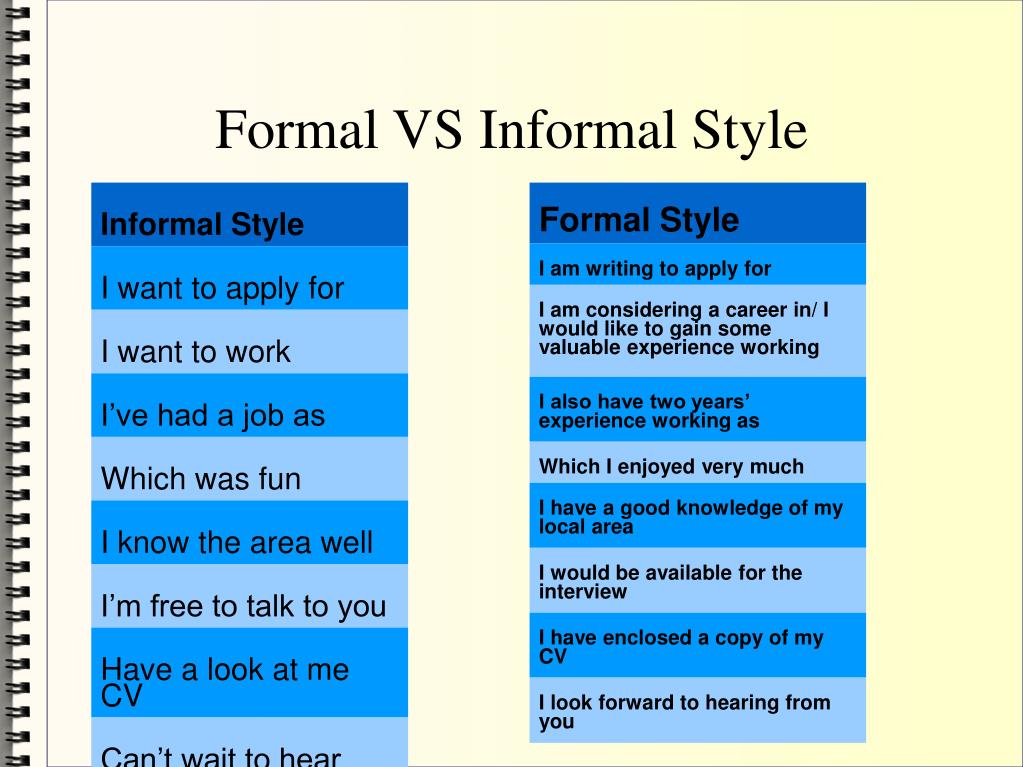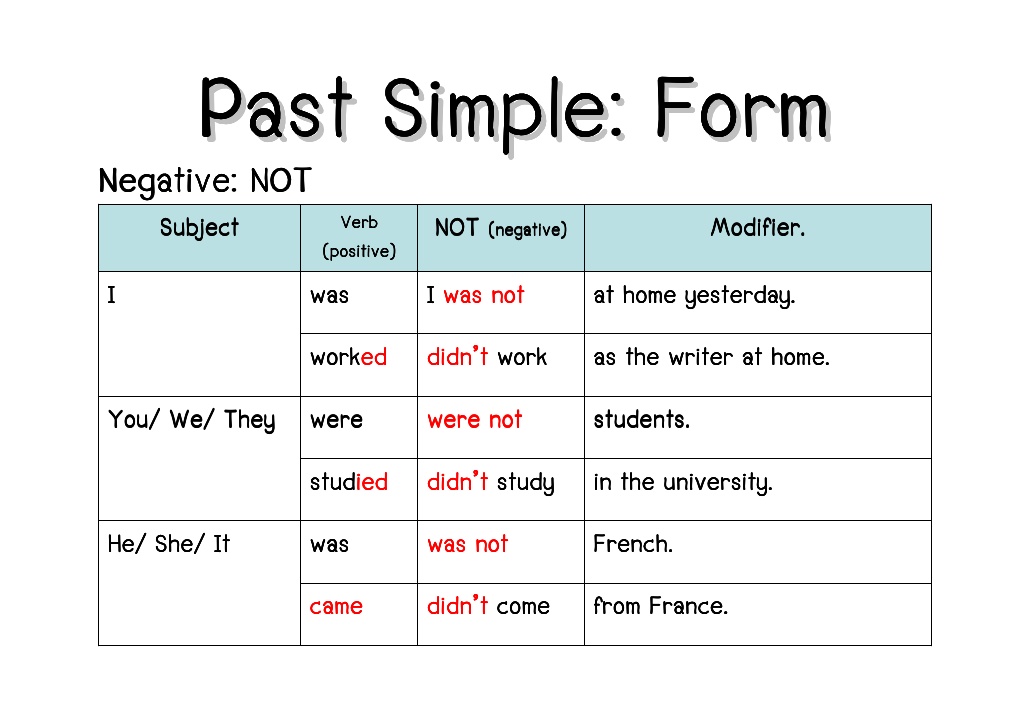How to start a dance group at school
How to start a dance group or dance classes for kids
You can start a dance group or teach dance classes for young children aged 2-7 years using the Pirate Sessa’s dances – and you don’t need to be a professional dancer to do it. As long as you set expectations right initially – that it’s all about simple dance moves for kids and having fun together, and that you are the leader.
Are you a parent who wants to start a dance group for fun or a person working in school surrounded by children who love dance and movement to music?
Then you’ve come to the right place! Dance activities for kids are a fun activity and great exercise.
By using your will power and having the positive attitude all set, you will be able to learn the dances and learn how you can do to inspire young kids to dance together with you (and the Pirate Sessa).
You need one of the apps Kids Dance with the Pirate Sessa in the Castle or Kids Dance with the Pirate Sessa in the Dungeon so you get access to the dance videos and music. You can then use both choreography and music in your dance classes.
Pick a few of the dances in one of the apps and learn them. Practice, practice, practice.
The moves don’t need to be perfect but it’s important that you learn them so well that you can do them the same way every time, otherwise the children will be confused.
Preparation and dance class outline
Children like to recognize and repeat things, to know what comes next from time to time. So you need to prepare a dance class outline, which is recommended to be the same every lesson.
Begin the dance lesson the same way each lesson, children like when there is a predetermined schedule. Use the same principle when you teach the dances, do it the same way every dance lesson and teach the dances in the same order every time.
Finish the dancing part with Freeze Dance towards the end and then gather the children, and read a greeting from the Pirate Sessa if you want to.
4-8 children is an suitable size per group of dancing children, divide by age and mix girls and boys. A class lenght of 30-40 minutes and 3-5 dances tend to be good for children ages 2-7 years.
A class lenght of 30-40 minutes and 3-5 dances tend to be good for children ages 2-7 years.
Dance class outline
Start with a gathering and an introduction. It’s important to think this through in advance, how you are going to start strong, and then do the same each dance class (if it works well, otherwise change to something that works better).
- 1. Suggested gathering and introduction
Gather and sit down in a circle for a short while and say ”now we are going to dance Pirate Sessa’s dances”, and then introduce Pirate Sessa shortly. Tell the short story – that her father is a pirate and her mother is a princess and that right now the Pirate Sessa is on the pirate boat, out on the big oceans, and that she likes to create fun dances for kids.Introduce yourself by saying your name and let the children say their names, if you do not already know each other of course.
If there is a school group or a group of friends where children already know each other, you can skip the names and go directly to get everyone’s thoughts set to dance.
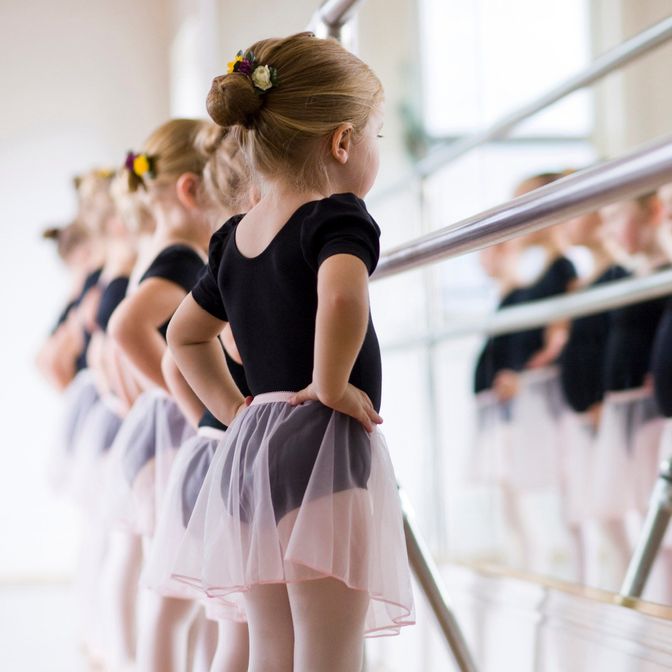
- 2. Transitioning from introduction to start dancing
Before you start dancing, it’s good to get the group set to dance, so the thoughts and the focus are set on dance. A great way to do this is to talk about dance.Go the circle around, you start and say for example:
”I like to flap my arms like a butterfly when I dance, what do you like to do when you dance?”
The children usually answer ”spins”, ”jumps”, and so on.Then you can move on by saying something like:
”Today we’re going to do both spinning and jumping – and flapping our arms like a butterfly, we’ll start with Pirate Sessa’s Butterfly Dance.”Stand up and tell the kids that it’s time to stand up and start dancing. You choose if you wanna dance in the circle or if you stand at the front facing the group and the children are in a group and looking at you. (The kids will mirror what you are doing because you face them.)
It’s of course also an option to use Pirate Sessa’s apps by connecting the iPad to a smart board or via Apple TV, if there is an opportunity for it and that way let Pirate Sessa be dance teacher and show the dances if you prefer.

- 3. The dance lesson
Turn on the music. Show the dance videos or teach the dances yourself – dance and let the kids watch and mimic, the kids will do their best to keep up. Repeat and repeat and repeat. Do the same dance over and over again.The most important thing is to feel the group, it’s better to keep the level low so that everyone feels successful – so the kids feel ”I can do this” and instead work with additional challenges if any child has extra dance experience. If a child also dance in a dance school or have older siblings who dance a lot, he or she can maybe get to play ”dance teacher” sometimes, or show some moments when the music is off, for example.
Tips for dance groups of children 2-4 years
Go for 3-5 dances if you have kids dance for children 2-4 years, do the dances over and over again, the same dances lesson after lesson. You might think that it will be monotonous, but the kids love repetition and to feel ”I can do this, I’m good at this”.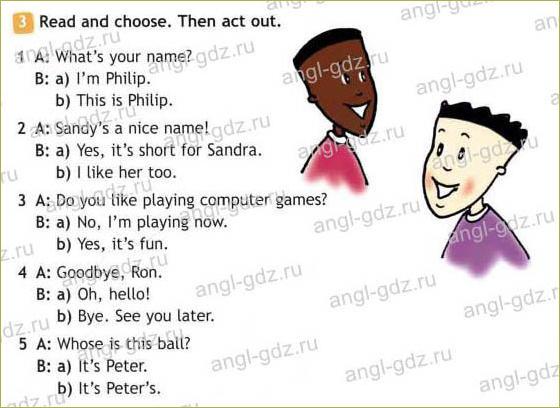
There is usually enough with three dances for younger children (repeat, repeat) and four or five in a group with older children.
Tips for dance groups of children 5-7 years
If you have children who are 5-7 years, you can introduce more and more dances over time, start with 3-5 the first time and then you can add dances.Let the group set the pace, rather wait an extra time to add a dance than to do too much, then the children lose the love of dance.
- 4. Suggested finish
If you want to, you can do a ”thing” every dance lesson and tell the kids that you have received a message in a bottle from Pirate Sessa, there are 10 short stories from Pirate Sessa’s treasure hunt trip in Costa Rica in Pirate Sessa’s World, starting with:
Greetings to YOU from Pirate Sessa’s treasure huntingSo, if you want to you can finish each dance class by reading a story (”a message in a bottle”) aloud. (Then at the bottom right, you can then scroll to the next story.
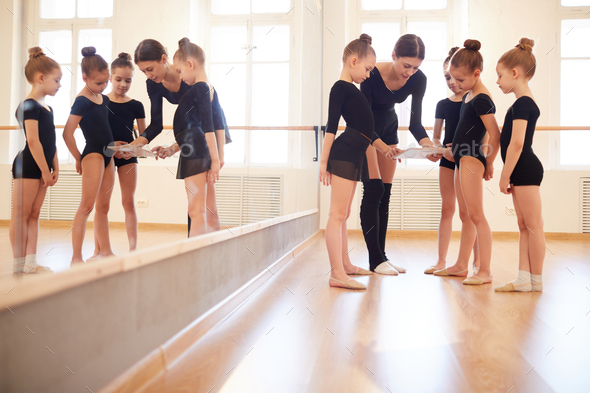 )
)It is a good and exciting finish ”let’s sit in the circle, the Pirate Sessa has sent us a message in a bottle, now you will get to hear from hear again”…
How to teach the dances to the children
The teaching method is ”mirroring” – watch and mimic. Kids are used to learn through repetition and by watching and then trying to do about the same, children learn things like that naturally from birth.
Tips when teaching the dances to the kids:
- 1. Tell what dance it is
First, start by telling what dance you are going to do next. Turn on the dance videos, or the music if you show the dances yourself – and do the moves. Let the kids mimic and do their best to keep up. Repeat the same dance five times (at least). Turn off the dance videos/music in between if you wanna go through one or more moves a bit slower. - 2. Focus on main moves, skip the details
Focus on the main moves, each dance has a few ”main moves” and it’s easy to understand which they are in each song.
You can go through the moves a little extra between each run-through if you want, but avoid going into too many details (there are not many details, the dances consist mainly large moves).
- 3. Repeat again and again and again
Children need and like repetition. If you notice that several in the dance group have difficulty doing any of the ”main moves” after several repetitions, switch off the music/dance videos and go through the moves a little extra together. Show, show, show. Practice, practice, practice.Do not correct individually, always talk to the whole group, even if it’s only one that has difficulties – show the whole group.
- 4. Practice – and remember that own versions are okay
Switch on the music/dance videos again and rehearse, rehearse, rehearse.Let the kids do the moves ”their own way”, it’s okay to do own versions, the important thing is that everyone is dancing and having fun.
After enough repetitions, most of the kids will do the moves more and more like the way you do them, or as Pirate Sessa do them the dance videos.

If you have the opportunity to play the dance videos on a screen, smart board or Apple TV, you can play a dance at a time, run the video and do the moves while watching.
Then try turning off the screen and only listen to the songs and let the kids dance their own versions of the dances.
Show eller dance party?
IF the kids and you want to – you can invite the parents to a dance show after you have been practicing for some time. Choose to do one or more dances.
If you want to, you can divide the group into smaller groups, by age, for example, and let 3-year-olds do their favorite dance, 4-year-olds their favorite and 5-year-olds theirs.
Let the other children in the dance group sit next to or in a circle support their dancing friends.
Plan and adjust any show by age. Some of the younger children usually prefer to sit in the parent’s knees when it’s show time and it’s okay. Those kids think it’s fun that the parents are there and might be active dancing another time, when the time is right.
Slightly older kids may want to rehearse some dances and perform at the local shopping center, and perhaps take the opportunity to make a collection for charity for example. If you are doing a show, do it in a way so both you and the kids are having fun. Some kids love to do dance shows, som don’t – both are as okay.
Making your own dance props or own dance clothes
You can do a lot of fun things around the dancing, pottering to fix props and stuff. For example, collect old T-shirts to cut and make dance tank tops of, or pieces of fabric to hold in each hand and flap with in the butterfly dance or to use as a pirate bandana on the head.
It’s also possible to make pirate eye patch with paper, rubber bands and sequins or other bling bling.
A great show outfit is jeans and t-shirt. A cool uniform and something that most children already have at home.
Or you can go for a color theme – everyone wear something red, for example, and all bring red clothes and they can maybe borrow from each other if not all have. Someone might have several red shirts or red caps, and are willing to lend it to other.
Someone might have several red shirts or red caps, and are willing to lend it to other.
If you want to use the dance concept on a wider scale (commercial)
If you want to use the Pirate Sessa’s dances at a gym or dance school, commercial use, such as dance classes as a regular part of the schedule at a gym or gym chain or in dance schools, for example – contact me first.
Then you need extra instructor training from me and the gym or dance school will pay an annual fee for the right to use Pirate Sessa’s dance concept commercially.
Please write and tell
Please email Pirate Sessa and tell how you and your dance group are using the dances, if possible I love to see pictures too. Pirate Sessa loves to hear about and see how you are having fun with the dances (I do not publish photos without permission so no need to be worried about pictures or videos spread by me).
Good luck dancing and remember = having fun is the most important thing when dancing the Pirate Sessas kids dance.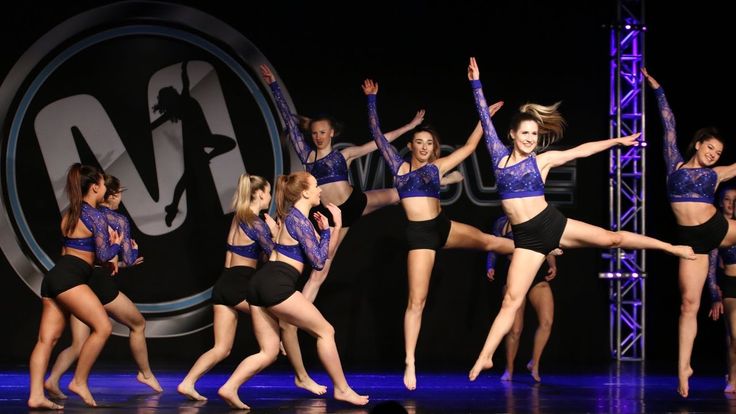 /Pirate Sessa
/Pirate Sessa
[delaify]
How to Make My Dance School a Nonprofit | Small Business
By Jordan Meyers
As a non-profit, your dance school can qualify for exemption from income, sales and property taxes, allowing you to put more of your money towards fulfilling your mission. Likewise, non-profit status may qualify you for some types of government funding. Getting set up as a not-for-profit business can, however, require a good deal of work.
Perform a Needs Assessment
-
Before you start organizing your nonprofit, assess the need for a nonprofit dance school in your area. You can do this by locating other nonprofit dance schools in your area and evaluating whether they are meeting the needs of the community. If not, you might have a good basis for starting a nonprofit dance school. In addition, you can conduct research polls to determine whether your target audience has an interest in dance instruction. For instance, you can conduct surveys of low-income residents to learn whether they would sign their children up for ballet classes.

Business Plan and Mission Statement
-
You will need a business plan to start a nonprofit business. The plan should lay out how and where you will run the business, how you will market it and how you will get the money required to keep the business afloat. This plan should also explain the need for the dance instruction you will provide and describe the people you will serve. You will also need a mission statement that clearly defines your dance school's mission in a compelling manner. For example, your mission statement may include your intention to promote health and flexibility in senior citizens through dance classes. Another possible mission could involve providing dance lessons to low-income children.
Organization
-
You will need a board of directors for your nonprofit dance school. Each state has a specific number of required board members, but three is a common number. Your board members should be trustworthy and capable of bringing something to the nonprofit, such as an interest in dance, talent for organization, fund-raising and program development.
 After selecting your board of directors, file articles of incorporation to make the dance school a separate entity from you and then create bylaws to stipulate how your organization will run.
After selecting your board of directors, file articles of incorporation to make the dance school a separate entity from you and then create bylaws to stipulate how your organization will run.
501(c)(3) Status
-
File for nonprofit status, also called 501(c)(3) status, with the Internal Revenue Service. Download and complete IRS Form 1023 Application for Recognition of Exemption. You can find instructions for the form in IRS publication 557. Consisting of more than 20 pages, this form is lengthy and includes many complicated terms and questions. For example, you will have to provide the name of your dance school, details about your business organization and a description of your dance school's operations in the past and present. You also will have to provide financial data for your dance school, information about any compensation your board of directors will receive and details about your plans for fund-raising efforts. For instance, if you will solicit donations by phone for dance wear, you will have to reveal this on IRS Form 1023.
 You might benefit from seeking a lawyer's help with completing this form.
You might benefit from seeking a lawyer's help with completing this form.
Tax Exemption and Mailing Permits
-
As a nonprofit organization, you might qualify for state and local tax exemptions in addition to federal exemptions. For example, your nonprofit status might translate into exemption from income and sales taxes. Some states and localities will grant exemption based on your federal nonprofit status alone while others will require you to complete an application process. You can contact your state's Department of Revenue and your city or county's tax agency for details about the application process. In addition, you might want a nonprofit mailing permit, which makes your dance school eligible for cheaper second- and third-class rates for bulk mail. Contact your local post office and request information Publication 417 to learn about mail permits. You might use this permit, for example, when mailing information to a large number of potential students.

References
- National Council of Nonprofits: How to Start a Nonprofit
Resources
- United States Postal Service: Publication 417 - Nonprofit Standard Mail Eligibility
- IRS: Form 1023 Application for Recognition of Exemption
- IRS: Publication 557
Writer Bio
Jordan Meyers has been a writer for 13 years, specializing in businesses, educational and health topics. Meyers holds a Bachelor of Science in biology from the University of Maryland and once survived writing 500 health product descriptions in just 24 hours.
We open our dance school. Continued
10
+10
0
| Miscellaneous
Social dances
We open our dance school. Continued
Let's continue to study the nuances and pitfalls of such a complex business as opening your own dance studio.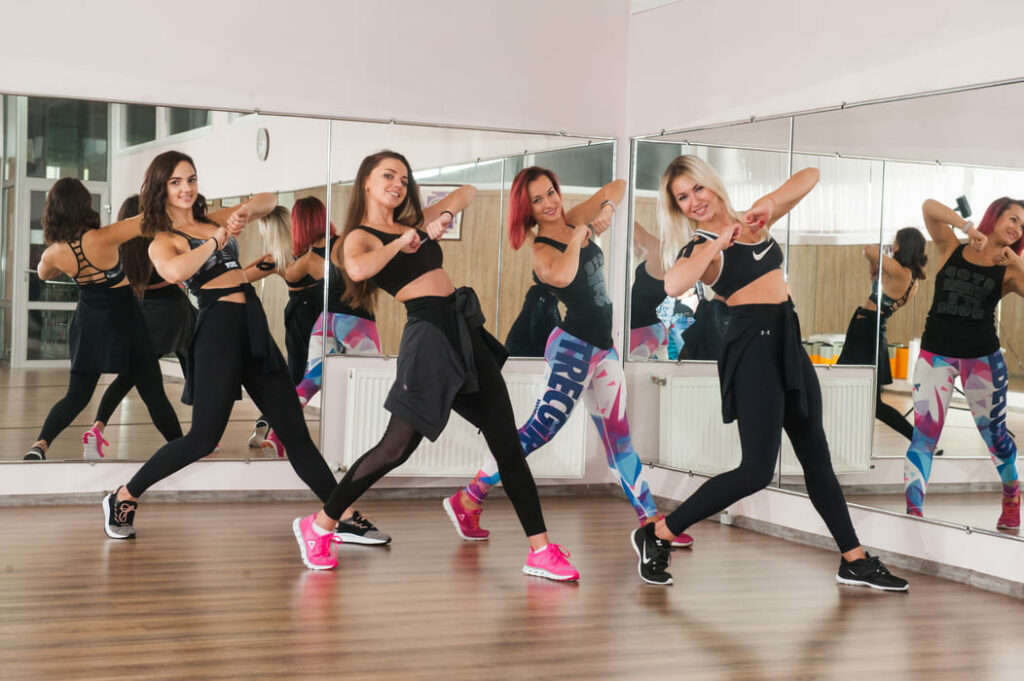 The next step is to talk about issues such as the design of the hall, the number of people in the group, the timing of training, as well as some common problems faced by the organizers of dance schools. nine0004
The next step is to talk about issues such as the design of the hall, the number of people in the group, the timing of training, as well as some common problems faced by the organizers of dance schools. nine0004
We open our own dance school. Continued
Decoration of the hall
One of the main conditions is to have a good, soft floor - preferably parquet. A solid concrete base is unlikely to add additional customers to you. And those who will periodically beat off their heels on it will soon surely run away from you. But you can save a little on mirrors by not covering all the surfaces of the walls with them, but only part of them. Other design elements depend on the specifics of the dances. For example, a ballet barre would be completely out of place in a hip-hop class. nine0004
We open our own dance school. Continued
Number of people and duration of training
The optimal number of people in a group is 10-15, more is not needed. The studio will become truly profitable if there are several such groups. As for the duration of the training course, there is no strict framework. Most clients are result oriented and practice until they learn how to dance a specific dance. The standard frequency of training is one hour three times a week, and after studying the basic movements - once or twice a week. nine0004
The studio will become truly profitable if there are several such groups. As for the duration of the training course, there is no strict framework. Most clients are result oriented and practice until they learn how to dance a specific dance. The standard frequency of training is one hour three times a week, and after studying the basic movements - once or twice a week. nine0004
We open our own dance school. Continued
Typical Problems
There is a range of problems that is typical of most dance studios, year after year. One of them is the lack of men. It is no secret that the majority of visitors to dance studios are women, men go - a maximum of 30-40%. And this gives rise to another problem: some women, due to the lack of a male partner, quit classes. Another problem is the seasonality of the influx of customers. For example, there are much more customers in autumn than in spring. nine0004
We open our own dance school. Continued
Continued
dance studio, dance school, dance training period, hip-hop classes, hall decoration, ballet barre, parquet
Share a link
Blog tags
Find a tag:
Follow @4dancing
4dancing
Small Mosaic
large mosaic
profitability, work with teachers, promotion, difficulties and mistakes there was nothing like it at the time.
 nine0004
nine0004 During its existence, the studio went through several relocations, twice seriously went into the red, but in the end it remained a successful business, and then I sold it. I’ll tell you how everything was, what worked for me and what didn’t work out.
Why I decided to open a dance studio
The story began in a standard way: from childhood I dreamed of dancing and for a long time I persuaded my parents to take me to a choreographic studio.
There were no holidays, vacations or birthdays in the studio. It was possible to miss a training session only in two cases, as the coaches joked: he fell ill or died. The rest of the reasons were not considered valid, and it was possible to fly out forever. nine0004
Later, I appreciated the strict discipline and exactingness of the teachers. Thanks to them, I can easily control myself, concentrate on any, even unpleasant, business, and bring everything to the end.
This helped a little in business: I could work 10-12 hours a day without days off and holidays.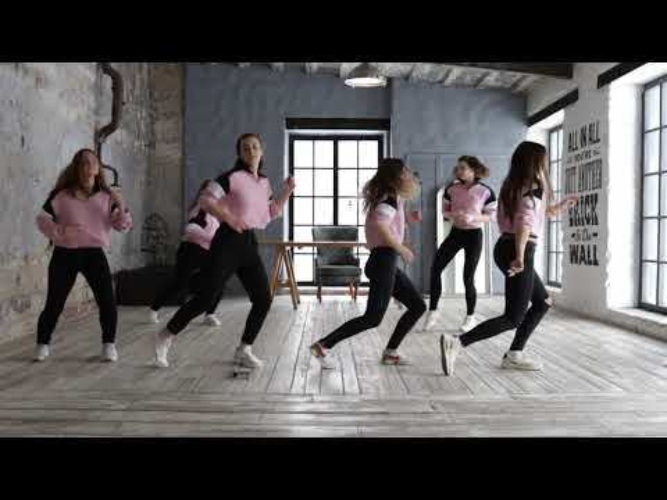
After graduating from school, I thought that dancing is a hopeless field, so I need to get a different education and build a career. I studied to be an economist and during my studies I managed to work in a trading company, a women's correctional colony and a large network company. nine0004
But I was bored doing monotonous activities and being subordinate to someone, I wanted to implement my ideas. In 2009, I decided to take a part-time job as a dance coach, and since then a completely different life has begun. I started working in the then popular areas: strip plastic, stretching, go-go, I also taught regular dances to children and was a group program coach in fitness rooms.
I enjoyed teaching people and putting numbers, inspiring others to accomplish things, raising disciples and achieving results together with them. It's like a coach's job: he gives his whole soul and nurtures champions. nine0004
Almost as soon as I started working as a trainer, I wanted to open my own studio.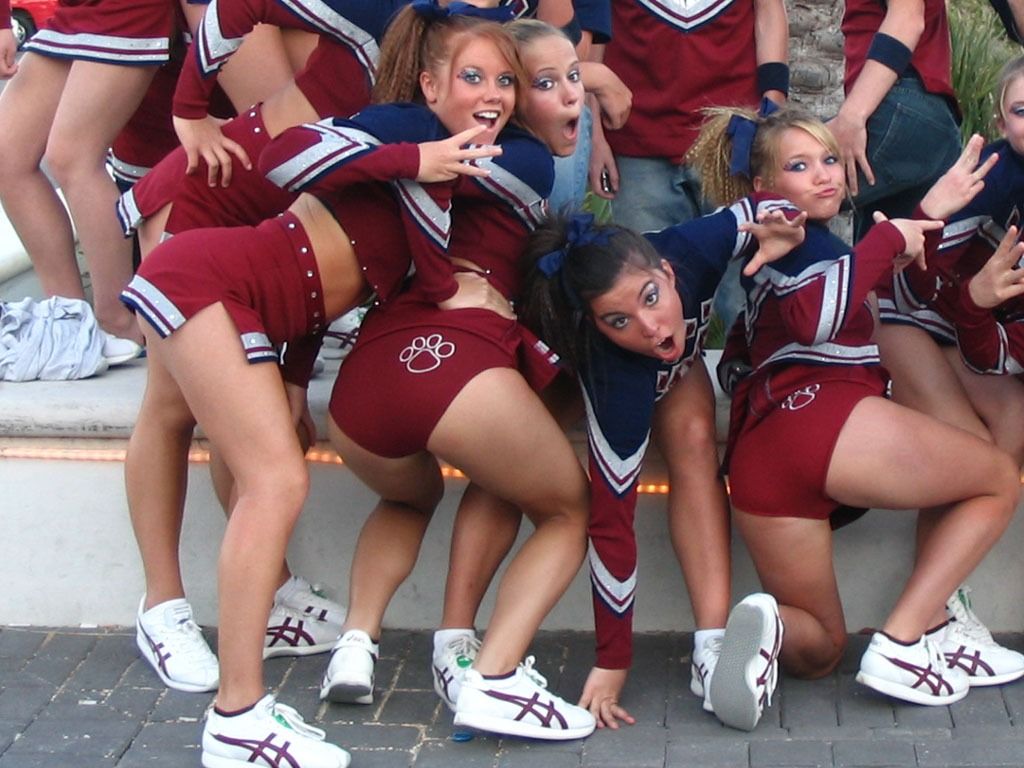 I didn't like the set boundaries and the backward approach to business. In the dance schools where I worked, there were outdated areas that were out of fashion for a long time, such as aerobics. Classes were held without requirements for students and without results: we did not put numbers and did not participate in contests or competitions. There were no opportunities for growth for teachers or students.
I didn't like the set boundaries and the backward approach to business. In the dance schools where I worked, there were outdated areas that were out of fashion for a long time, such as aerobics. Classes were held without requirements for students and without results: we did not put numbers and did not participate in contests or competitions. There were no opportunities for growth for teachers or students.
/twerk/
How to start twerking, how much does it cost and why shake your booty at all
The business itself was not service oriented. Schools did not develop, did not innovate - they simply worked for decades according to the old scheme. Several times I came with fresh ideas, for example, to shoot a video clip, but all this was perceived by the management with hostility.
In 2012, I graduated from the institute and received a diploma in economics. I had a choice: to leave for another city, because there were no prospects in mine, or to go work in the dance field abroad, or stay here, but do my own project.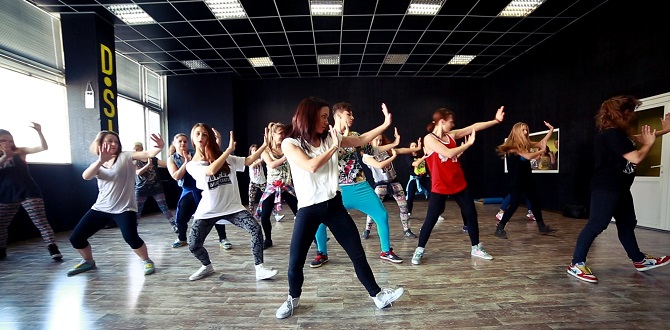 nine0004
nine0004
I dreamed of creating a project from scratch on my own: thinking about how to plan and conduct classes, presenting the design of the studio, tracking down the mistakes of others. All these thoughts were constantly spinning in my head, day after day I lived only with this idea, remembering what not to do or what could be improved.
After graduating from the institute, I myself learned about a new direction - half-dance, this is dancing with tricks on a pole. It seemed to me interesting and promising, there was nothing like it in our city. I decided that the idea would shoot and attract people due to its novelty. Three years after I started working as a trainer, I launched my own studio. nine0004
What is half-dance
Half-dance is close to strip plastic, but unlike it, the purpose of the dance is not to seduce, but to show acrobatic skills. The movements in strip dance are soft and smooth. And half-dance is the same gymnastics, only not on a beam or rings, but on a pylon. On it, dancers perform circus and power elements.
On it, dancers perform circus and power elements.
In my city, metallurgists were not even heard of such a direction, but in Russia and around the world in the 2010s, half-dance just became a trend. At that time, I already had a large client base from dance schools and fitness centers where I had worked before, many students asked when I would open my own gym. nine0004 Pupils perform elements of pole dance. The dancers practice in the most open clothing, because the only way to catch on the pole is with skin
| Pole dance combines elements of choreography, gymnastics, acrobatics | There is also a separate sports direction in the world - pylon sport, which belongs to air power athletics |
Before I opened my studio, I took pole dance training in Yekaterinburg twice - it was the school closest to me where this direction was taught. And there lived a friend with whom I could stay. nine0004
The first time I went was in January 2012, and then back in May, before the opening of my gym. I studied for a week every day for many hours, attended master classes. For the first time, the director of the studio gave me a discount on acquaintance, and the training itself cost only about 10,000 R. The second time I spent about 17,000 R: the cost of the training itself increased, and there were more additional expenses for food and travel. Both times I received certificates.
I studied for a week every day for many hours, attended master classes. For the first time, the director of the studio gave me a discount on acquaintance, and the training itself cost only about 10,000 R. The second time I spent about 17,000 R: the cost of the training itself increased, and there were more additional expenses for food and travel. Both times I received certificates.
27,000 R
I spent on additional training in pole dance
There were no competitors in my city at that time. We had only seven dance studios: three taught street dances like hip-hop, breakdancing and locking, the rest were aimed at children, taught modern and classical choreography and ballroom dancing. In fitness clubs, they mainly taught go-go and oriental dances. I decided to take a risk and become the pioneer of a new direction in the city.
First studio: 3m ceilings and a stolen idea
In May 2012, I started looking for a space to launch the project just in time for the start of the school year.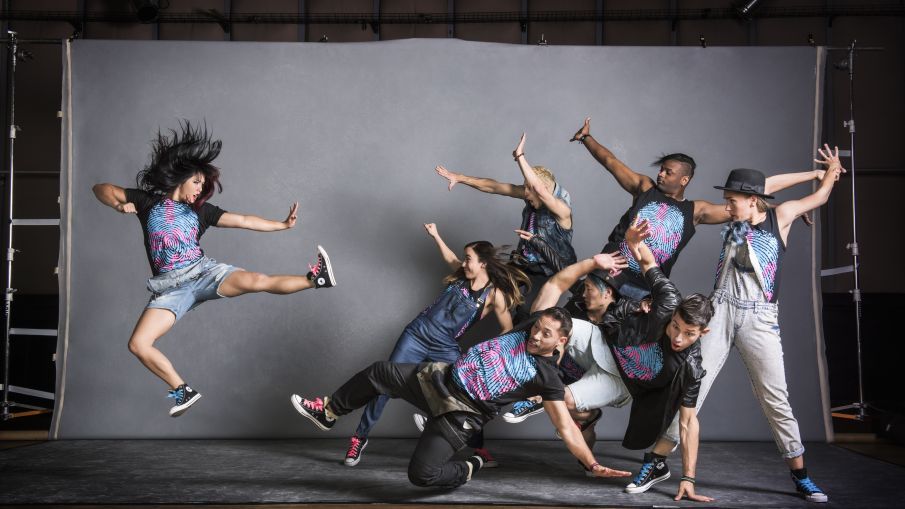 I discussed all the details like equipment, technical issues and the learning process with the directors of the studio in Yekaterinburg when I studied half-dance there. nine0004
I discussed all the details like equipment, technical issues and the learning process with the directors of the studio in Yekaterinburg when I studied half-dance there. nine0004
The room had its own requirements:
- Ceiling height - at least 3 meters, so that poles - pylons could be installed.
- The ceiling plate must not be hollow, but must be at least 30 centimeters thick. The pylons must withstand a weight of up to 150 kg. If the ceiling is thin, the mount simply won't hold up.
- Rent — up to 15,000 R per month. In my experience, it would be difficult to cover the amount higher with the number of subscriptions, and if something happens, I could find that kind of money to cover a failed month. nine0064
/dogovor-arendy/
What businesses should consider when signing a lease
Not all landlords agreed to damage the ceiling, not always the thickness of the ceiling suited my needs.
The deal failed with the first hall. Due to the peculiarities of the ceiling, an additional structure had to be made there. The landlords agreed to do it themselves, and I would have paid for the work, but at first they doubled the price, then increased it even more, and then refused to cooperate at all. nine0004
Due to the peculiarities of the ceiling, an additional structure had to be made there. The landlords agreed to do it themselves, and I would have paid for the work, but at first they doubled the price, then increased it even more, and then refused to cooperate at all. nine0004
A few months later, I found out that they wanted to steal my idea and open a similar studio.
Fortunately, their attempt failed: they could not find the appropriate teachers, because only I had such a certificate and knowledge in the city. But the problem with the hall remained: I was already promoting a group on Vkontakte and recording for the academic year. The students were actively recruiting, but I had nowhere to receive them.
I couldn't just make excuses by telling a story about unscrupulous landlords and kept looking everywhere I could: on websites, in local newspapers, driving around the city, looking for signs about rent. nine0004
As a result, the opening had to be delayed for two months: due to the specifics and restrictions on the rental price, the premises had to be searched for almost half a year. A former colleague helped: he learned from mutual friends that I was opening a studio, and his friend was just renting out a small hall.
A former colleague helped: he learned from mutual friends that I was opening a studio, and his friend was just renting out a small hall.
We agreed that part of the repair costs will go towards rent. I did a facelift in a few days and bought equipment.
I did the repairs on my own — for example, I painted the walls myself. If it was necessary to attach pylons and arrange heavy furniture, then she called for help from familiar men. They spread linoleum on the floor and nailed it in places. nine0004
Pylons are installed quite quickly if there are no problems with the ceiling and floors: you need to drill a hole, attach the pylon, level it, and that's it. Detailed installation instructions are always attached to the pylons. We set up the first pylon in 2-3 hours, the rest were faster.
An important part of the cost for a dance studio is mirrors. They were made in a local company in my city to order. I ordered one-piece large mirrors to the floor. Due to the large size, there were difficulties with transportation: a special vehicle with equipment for transportation was needed - plastic windows are usually carried in such vehicles. nine0004
nine0004
They could not be moved or installed by one person, and they could hardly fit into the aisle. Plus, there were difficulties with fixing: if the wall was not perfectly even, then any slightest deviation could be seen in the mirror - at the joints, in reflections.
But the mirrors themselves were excellent, and I then transported them to new studios, breaking the part along the way and ordering new ones. As a result, my friends came up with the idea of custom-made huge plastic frames, like for plastic windows, where we inserted mirrors. So they were easier to transport and install. nine0004 For a pylon, a hole is drilled in the ceiling slab and fixed with screws. If the ceiling is not strong enough, the pole may come off during the trick and cause serious injury. Source: Pole4you This is what the studio looked like after the repair - huge mirrors were made to order at the local production
At the same time I registered an LLC, I was the sole founder. I chose LLC because I planned to open branches in other cities - it seemed to me that it would be easier to do this than with an individual entrepreneur.
By the way, it would be better if I opened an IP. The LLC was not useful to me later, I had to close it, and this is more difficult than an individual entrepreneur. In the second hall, I had to negotiate with the landlord so that he would give me a legal address. He reluctantly agreed, and I had to pay for it. The LLC also needs to submit a large number of reports, but I did not have the necessary accounting knowledge. Until I hired an outsourced accountant, there were delays in submitting reports and fines.
/ooo-na-divane/
How to register an LLC from home
I opened the studio at the beginning of November. I was ashamed in front of the students, but they waited and almost all of them came.
To open a studio, I took a loan, so after the opening, most of the proceeds went to payments to the bank - 20,000 R per month. For the entire time the business has been running, I have taken several loans, on average, 30,000-50,000 R for a period of 3 to 5 years. The total amount of all loans was 200,000 R.
The total amount of all loans was 200,000 R.
Expenses for opening a studio in 2012 — 200,000 R
| Equipment: mirrors, pylons, fixtures | 95 000 R |
| Cosmetic repairs: wall painting, flooring | 53 000 R |
| Training and professional development before the opening of the studio | 27 000 R |
| Bathroom renovation | 14 000 R |
| Music center, locker room furniture, hangers at the entrance and other small items | 11 000 R |
Equipment: mirrors, pylons, fastenings
95 000 R
Cosmetic repair: wall painting, floor covering
53 000 R
Training and advanced training before opening the studio
9000 000 RSanuzla repair
14,000 R
Music center, locker room furniture, hangers at the entrance and other trifles
11,000 R
How much did I earn
The first studio was small - there were only three pylons, and I could not teach more than an hour six or seven people.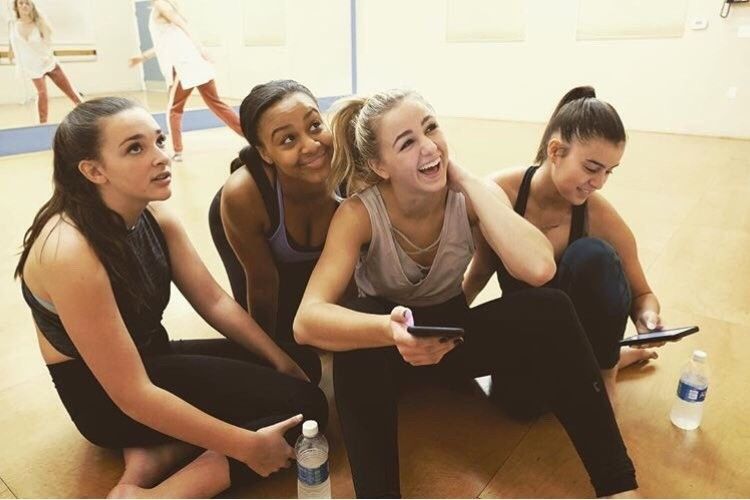 This allowed the studio to earn an income of about 65,000 R per month. nine0004
This allowed the studio to earn an income of about 65,000 R per month. nine0004
There were two main sources of income: group and personal lessons.
Group lessons were by subscription only. The most popular, for eight classes a month in the evening, cost 1800 R. Evening is considered the most profitable time, because more people come. There was a small discount for the daytime.
Personal lessons were by subscription and one-time. A subscription for eight classes cost 3000 R, a one-time visit - 500 R. At first, the income from personal classes was small: with group classes, I did not have time to take more students. When more teachers appeared, I could only go to personal classes, and the revenue from them reached 30,000 R per month. nine0004
A regular waste was the purchase of alcohol: it is rubbed on the surface of the pole to remove dirt and sweat and improve adhesion to the skin. Alcohol had to be bought in canisters from doctors I knew - we needed a concentration of at least 70%, and this is not for sale in the public domain. It took 2000 R per month.
It took 2000 R per month.
The largest turnover was from the spring of 2013 to the spring of 2014: 140,000-170,000 rubles. And the largest net profit was about 60,000 rubles.
Revenue for December 2012
| Subscription for 8 lessons | 27 000 R |
| Subscription for 12 lessons | 12 500 R |
| Subscription for 16 lessons | 12 000 R |
| Day group | 8000 R |
| Personal lessons | 5000 R |
| Total | 64 500 Р |
Subscription for 8 lessons
27 000 R
Subscription for 12 lessons
12 500 R
Subscription for 16 classes
12 000 R
Day group
8000 R
Personal classes
5000 R
64 64 500 500 500 500 500 500 500 500 500 500 500 500 500 500 500 500 500 500 500 500 500 500 R
Studio expansion: moved four times in five years
The studio lasted only six months in the first building: the landlord changed plans and we had to move out.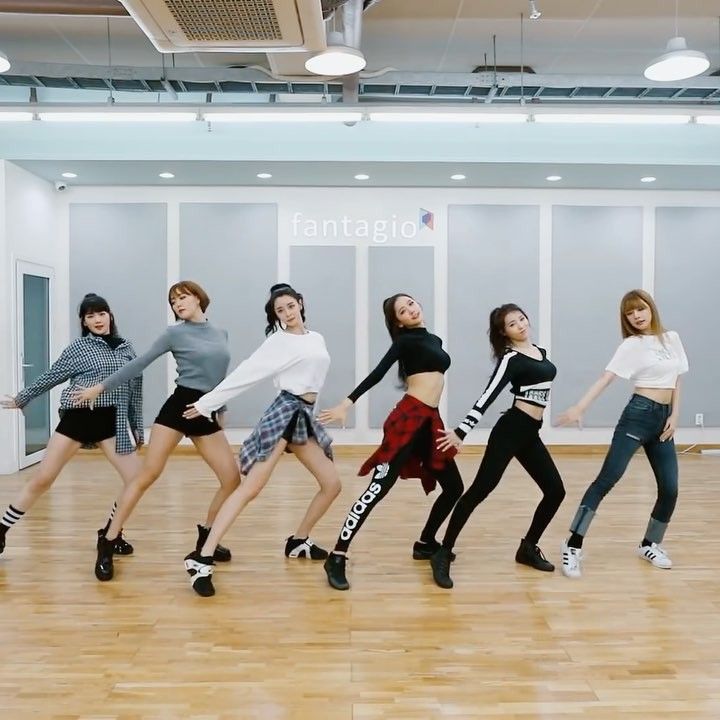
I already wanted to move out myself, because the room was small and I could not train more than seven people in an hour. To support myself, support the studio and repay the loan, I needed to sell 20-30 subscriptions a month. If I bought less, I no longer had enough money for all expenses. It was necessary to expand and increase income, and for this, another room was needed. In just five years, we moved four times - each time to a new area of the city. nine0004
In March 2013, I took away the mats and the music center and moved to another room - almost three times bigger than the old one. I had to take out a loan again, because the old pylons did not fit in height. For 150,000 R I bought five new pylons and changed the flooring. The move cost 300,000 R, including rent for two months.
300,000 R
I spent on moving
There were no problems with buying poles: even then in Russia there were several specialized companies that produced professional poles for dance studios. The best and most famous is located in St. Petersburg - Pole4You. You place an order on the website, choose a convenient delivery method - I had "Business Lines" - and they send it. Two weeks later I received the pylons. nine0004
The best and most famous is located in St. Petersburg - Pole4You. You place an order on the website, choose a convenient delivery method - I had "Business Lines" - and they send it. Two weeks later I received the pylons. nine0004
| Lesson in the second hall after renovation. The floor had to be re-laid - it should be soft high-quality linoleum so that the students do not hit their knees and do not get hurt when they fall | This is the third hall we have moved to. There I seriously invested in repairs, laid carpet on the floor, repaired the locker room and shower for students and teachers |
 In the third hall, they made a bright panel on the wall. I was the first in the city to start teaching half-dance, so this particular dance is depicted on the panel
In the third hall, they made a bright panel on the wall. I was the first in the city to start teaching half-dance, so this particular dance is depicted on the panel The rent of the premises was three times higher than the previous one, the communal apartment was included in the price. In addition, you had to pay for security. All together it cost me 50,000 R.
There were no cheap premises, so the choice was either to continue or give up the dream. I decided to take a risk, and the risk was justified: the business grew rapidly. After the move, we already taught 10-12 students per hour and earned an average of 150,000 R per month.
How I built my work with teachers
I recruited teachers from former students: I chose those who had the potential for one direction or another, loved classes and knew how to communicate with the team. There were three main teachers, I took one or two more for additional directions like go-go. nine0004
She tried to make the work of teachers a pleasure: she gave salaries higher than the market, bonuses, paid for their education and advanced training, gave part-time jobs. The average salary in the city for teachers at that time was 2500-4000 R per month for 2-3 lessons per week. I paid 7000-8500 R, if I gave out a bonus, then it came out about 10,000-11,000 R. I gave out bonuses to those who attracted new students to their classes and, most importantly, kept new students. Or those who came up with something interesting like New Year's contests. nine0004
The average salary in the city for teachers at that time was 2500-4000 R per month for 2-3 lessons per week. I paid 7000-8500 R, if I gave out a bonus, then it came out about 10,000-11,000 R. I gave out bonuses to those who attracted new students to their classes and, most importantly, kept new students. Or those who came up with something interesting like New Year's contests. nine0004
Teachers went to Yekaterinburg to improve their qualifications. It cost me 500-3000 R per person. I myself taught until the fall of 2013, and then I decided to leave only to manage the studio, since classes took time and effort.
Promotion: mostly word of mouth worked
The very first group I had was on Vkontakte — I started recruiting the first students even before the opening of the studio from former students. When I started to develop the group, I asked my friends to join it and make reposts, every day I posted posts, photos and videos to attract people. About a year later, the group had 1000 subscribers, and since 2013 it began to develop actively. nine0004
nine0004
The popularity of the project was also influenced by the uniqueness of the project: half-dance in the city was a new exotic direction, people from the media sphere became interested in this.
/marketing-ads/
Marketing Basics for Business: Advertising
My main clients were girls aged 25-35 with an average income and a little higher.
Here's what I used to promote.
Regularly updated accounts on Vkontakte and Instagram. I photographed a large, beautiful, spacious hall with high pylons, people reacted and signed up for classes. We wrote about the studio every day, posted posts, asked all our acquaintances and friends to tell about us. nine0004
Involved in the promotion of the community of teachers. In the new building, I already taught with three coaches, whom I found among former students. They posted recruitment announcements for groups on their social networks, made photo sets and videos for Instagram. Friends of acquaintances came - it turned out such a word of mouth.
Friends of acquaintances came - it turned out such a word of mouth.
Made a website for the studio. It cost about 13,000 R. I made a beautiful clip on the main page, added photos, information about teachers and a class schedule. After the site appeared, calls began to arrive twice as many. nine0004
13,000 R
I spent on the site
I invited photographers and cameramen to work on a barter basis. The direction was new in the city, so they were interested in working with us free of charge. Sometimes they did provocative reports like "Half-dance: striptease or art?", but in any case, publications brought us fame. There were about 15 permanent photographers.
Photos from the performances of studio teachers at concerts and events. These are dances on canvases. Photo: Dmitry Kaiser| An example of a photo shoot that we came up with with a photographer. Photo: Dmitry Kaiser | For them, it was new and unique content that no one else had done in the city. Photo: Dmitry Kaiser Photo: Dmitry Kaiser |
Posted ads about the studio. I have published on local sites, 2GIS, Flampe and Avito. She advertised several times through Yandex Direct. Local sites and 2GIS did not give any results, but promotion through Yandex Direct and Google Ads worked. nine0004
I was engaged in promotion, at the very beginning I asked a friend to figure it out and help set up advertising. Usually, new campaigns were launched before the season - at the end of summer to attract students for the new school year, and at the end of winter to attract people for the spring. The advertisement lasted 1-2 weeks, the average budget for the campaign was 7000-15 000 rubles. We did not have to negotiate with them: they themselves found out that a new dance style was being taught in the city, and they wanted to talk about it. nine0004 We have worked with both beginner and well-known photographers. All this helped to promote the studio, but the most unusual ideas were suggested by already experienced photographers. For example, this photoshoot with canvases in nature. The canvases were fastened directly to the trees. Photo: Sergey Skorobogatov
nine0004 We have worked with both beginner and well-known photographers. All this helped to promote the studio, but the most unusual ideas were suggested by already experienced photographers. For example, this photoshoot with canvases in nature. The canvases were fastened directly to the trees. Photo: Sergey Skorobogatov
Development of the studio: new directions in the city
Everything was spinning at breakneck speed. Soon I brought new dance styles to the city: aerial gymnastics on canvases and acrobatics on the ring. This trend had already begun in Yekaterinburg, and I knew that it would soon come to our city. It was necessary to have time to be the first. nine0004
At first, all this was not in demand, because it was hard and difficult for the students. It is very painful to practice on the ring and canvases: after the lesson there are huge bruises from hoops and burns from the fabric.
Imagine: you are hanging in the air and you are being held by a rag digging into your body.
But then the direction unfolded: beautiful photosets and clips with dances on canvas appeared in all social networks, competitions began to be held in cities, dance studios made enticing advertisements. nine0004
I was the first to develop this direction in the city, so the students immediately came to me. Once I organized a competition to draw attention to dancing on canvases: for the best photo on canvases, I gave a subscription to eight classes in the studio.
From the outside, these dances seem dangerous, but there have never been any accidents in my classes. Classes are necessarily held with special mats that soften the blows if someone suddenly falls. Teachers are trained and know how to avoid injuries. Before the start of classes, my clients got acquainted with the instructions for safety rules and signed it. Nevertheless, adults understood their responsibility, no one took risks once again. nine0004 For classes on canvases and rings, you need to buy additional anchors - these are such fixtures in the ceiling - and soft mats on the floor for safety
In general, there are few incidents in this area.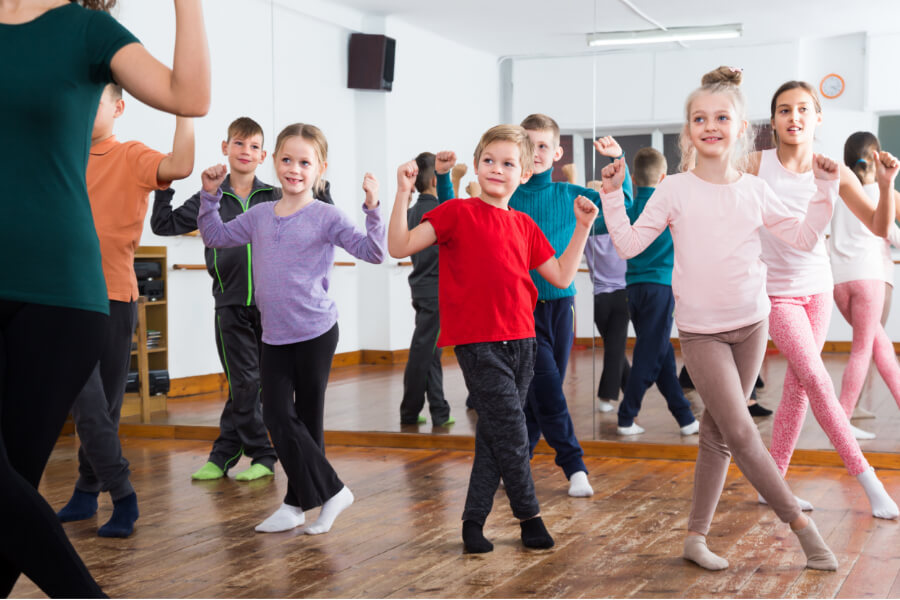 I heard only about one case: in Yekaterinburg, a girl flew off a pylon and broke her arm. But it was a pylon of a different design - a portable one that stands on the podium. It is less stable than a pylon bolted to the floor and ceiling in a studio.
I heard only about one case: in Yekaterinburg, a girl flew off a pylon and broke her arm. But it was a pylon of a different design - a portable one that stands on the podium. It is less stable than a pylon bolted to the floor and ceiling in a studio.
I first looked for teachers at the local circus school, we have a pretty strong one. But we worked with them for a couple of months and did not agree, so I sent several students to study in Yekaterinburg at my own expense - so that they could conduct classes. nine0004
44,000 R
I spent on the introduction of a new direction
The introduction of new directions cost 44,000 R: 38,000 R was spent on canvases, anchors and rings, another 6,000 R were spent on training teachers.
Children's dance school and missed grant
My students and parents of former students regularly asked to open dance classes for children: variety dances, stretching, modern choreography.
This would help expand the business and reach a different part of the audience. I knew for sure that the project would be successful: I had already worked as a choreographer with children aged 6-7, I had a reputation and potential clients. nine0004
There was no free money to create a children's school, so I decided to look for a grant and found a suitable one - a competition from the Entrepreneurship Fund. To participate in it, one had to take courses and defend a business plan.
I did not learn anything new in the courses, since I already had an economic education. The next step was to write a business plan and submit an application. I asked for money not just for a children's school, but for business development.
I collected a package of documents: statutory documents, certificates of no debts to government agencies, a certificate of completion of courses, several questionnaires from the foundation itself, a business plan and checks confirming the costs of the project - 15% of the requested amount.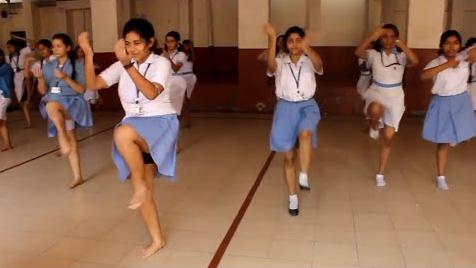 nine0004
nine0004
300,000 R
I got to the children's dance school
As a result, I won the competition and received 300,000 R.
Everything went well, but again there were difficulties with the premises. I needed a hall with an area of 50 m², and these cost 50,000-100,000 R, and not in the center, but on the outskirts of the city. I couldn’t take on such obligations and pay more than 100,000 R for the premises of an adult and children’s studio: I had loans, and if something went wrong, no one would help me. nine0004
I tried to search for premises through state auctions and the city administration, I turned to the mayor for help. She offered to do free classes for children from orphanages or large families. But no one came towards me. We have a small city, culture and education are not particularly developed here.
Factory workers live in my city, who prefer to drink and watch TV after work.
It was not accepted to get involved in something or have a hobby, so it is difficult to develop in a creative environment.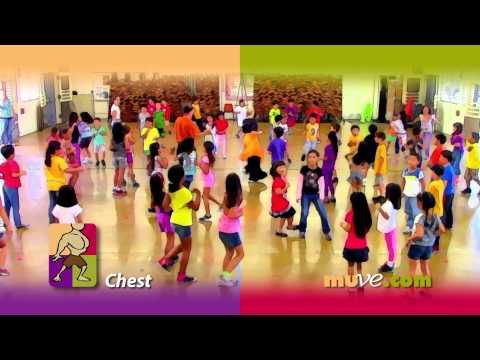 nine0004
nine0004
As a result, the school could not be opened. I spent a grant on an existing studio, and the foundation accepted it, because I originally asked for money to expand and develop the business. So the grant was well spent.
Despite the history with the grant, 2014 was a successful year: for the first time we held the first major dance event in the city — a pole dance competition. At the same time, it became possible to open branches in other cities: I found two halls and a representative, and I could launch three schools at once. But she was afraid of responsibility and put it off for the future. nine0004
/pozhaluite-grant/
How I got a grant for 100,000 R
I was afraid to pull such a large financial burden on my own, especially the simultaneous payments for four rents. I also wouldn’t have had enough time to manage all the studios myself, and there was no one to delegate.
If I created a network of dance studios, it would raise the status of the project, bring additional income and allow the sale of the franchise to start. In the future, I did not have such opportunities. nine0004
In the future, I did not have such opportunities. nine0004
Went into the red and started again from scratch
In the winter of 2014, things went badly. At first I thought that it was just the off-season, winter and summer in this area are disastrous months. I had a small airbag with which I closed the holes. But in the spring it ended, but the situation did not get better, and the business went into the red.
Just then the financial crisis happened, and it hit my city significantly: salaries dropped a lot, people began to save money - and first of all on hobbies. The city has a poor population, business is not doing very well, and financial shocks have a strong effect. nine0004
It seems to me that my business went into the red mainly due to two reasons:
- Some of the teachers turned out to be unscrupulous - they conducted additional classes in the studio past the cash desk. Or they were trained at my expense, and then left and poached students.
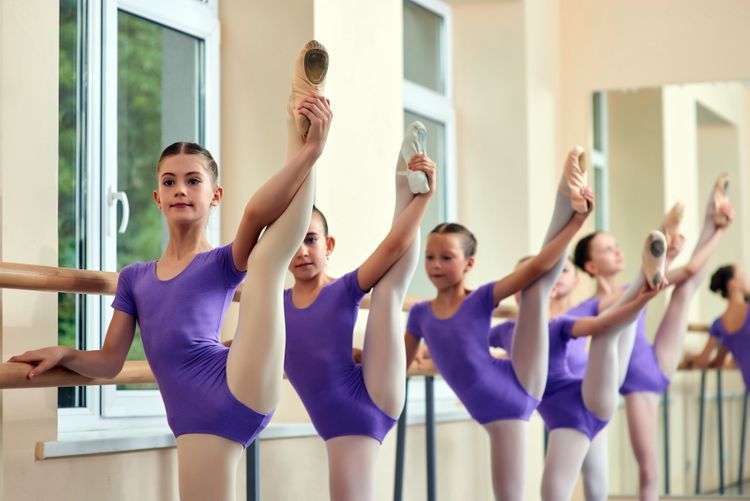 I noticed this just in the fall of 2013 and in the winter of 2014, I was losing 20,000-35,000 rubles a month because of this.
I noticed this just in the fall of 2013 and in the winter of 2014, I was losing 20,000-35,000 rubles a month because of this. - Clients asked to extend their subscriptions in advance, but never brought money. In the winter of 2014, there were a lot of such cases - about 9— 12 people per month.
As a result, the studio's income fell from 110,000 to 60,000 rubles. I was forced to fire unscrupulous teachers and could no longer pay rent.
I had to move from a good place to nowhere, and the studio stopped working for almost a year - until February 2015.
Despite the closure, I believed in my project and had no idea what else to do. At that moment, the studio seemed to be the work of my whole life. In January 2015, I saw an advertisement for the delivery of a building with four-meter ceilings and two large halls. nine0004
By that time, competitors had already begun to appear in the city, who also taught half-dance. Half of my students and all the staff went to them - this time no one expressed loyalty and did not wait for me to solve problems.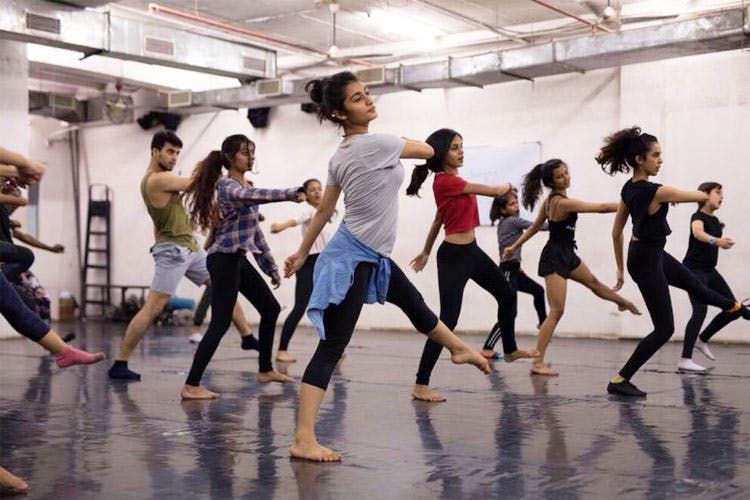 But the description of the new premises hooked me, and I decided to open again. She recruited teachers from her former students, and also looked for clients through social networks.
But the description of the new premises hooked me, and I decided to open again. She recruited teachers from her former students, and also looked for clients through social networks.
The repair of the hall took several months, so the studio opened only at the end of March. With difficulty, but I brought the business to its previous level, launched joint courses with teachers from other cities. I spent 285,000 R on the opening - these are the costs of repairs and rent for three months. I borrowed part of the amount from a friend, I earned part myself - at night I wrote diplomas in economics for students. nine0004
285,000 R
I spent on opening a new studio
How I decided to sell the studio two months. I managed to pay off debts for repairs and reach a stable profit.
In 2016, a lot has changed in my life. I met my future husband, we began to live together, and then we decided to move to another city. The business was irrelevant for me, and I put the studio up for sale. nine0004
nine0004
It was planned that it would be bought by one of the old students who have been working in the studio since its foundation. And so it happened. We negotiated with one of the students for almost a month. By that time, I had already closed my LLC and was about to move. Therefore, I sold the studio to her as an individual with the transfer of all rights, property and equipment for a symbolic 100,000 R - this is how much the equipment of the hall cost, taking into account wear and tear.
After the sale, I introduced the new owner of the studio to the staff and students, completed all personal affairs and never returned to this topic. nine0004
Expenses for December 2016
| Salary | 25 000 R |
| Premises for rent | 14 000 R |
| Drinking water and disposable cups | 2000 R |
| Alcohol | 2000 R |
| Utility payments | 1500 R |
| Total | 42 500 Р |
Salary
25 000 R
Rent of the premises
14 000 0004
Drinking water and disposable cups
200004
CITY
200004
Utility
1500 R
9000 РWhat mistakes affected the development of the business
Despite the successful start of 2014, I made mistakes that slowed down the development of the business.
Did not conclude contracts with teachers, because I relied on their integrity and honesty. As a result, they went through training that I paid for, then went to competitors and took students away. To prevent this from happening, I needed to legally fix the training and confidentiality conditions. For example, to prescribe in the contract that the teacher is obliged to work in the studio for a certain period after completing the training or pay its cost, otherwise - a fine.
Gave the keys to the studio to all teachers. nine0295 I did not follow what the teachers were doing in the studio outside of class, and someone began to conduct classes past the cash register. Usually, an administrator works in studios, and only he has the keys: he opens and closes the studio, marks clients, and monitors subscriptions.
Made the salary too high in the city. I could save about 15,000 R per month on teachers' salaries and spend this amount more appropriately - on advertising or attracting additional teachers during the daytime and weekends. nine0004
nine0004
Didn't introduce strict visiting rules and didn't set up an accounting system. I went forward when the students asked to renew the subscription on credit or pay in installments. Because of this, I lost some of the money: clients went to classes, but never brought money for them, and I could forget who did not pay. If we had a CRM or other customer accounting system, these problems could have been avoided.
Irrationally used the premises. Instead of opening a second hall and teaching other dance styles, I made a dressing room and an office for employees in its place. In addition, it was possible to sublease the premises in the morning and afternoon, when there were no classes. I was offered this, but I refused. The studio could have a large sum from the evening for the sale of subscriptions, so you would have to keep track of those who rent the hall for sublease - either hire an administrator or do everything yourself. There was no worker for a nominal fee, and I didn’t have enough time. nine0004
nine0004
Did not use all advertising tools . It was possible to attract well-known personalities in the city for cooperation, place booklets and business cards in popular places, launch targeted advertising and more actively maintain a page on Instagram. When I reopened the studio, I no longer invited the press and did not arrange master classes, and as a result, they began to forget about the school, especially since three competitors appeared.
Made hasty decisions. The third move was unsuccessful: the studio was in an area difficult to reach by public transport, too much money was spent on repairs, and it was difficult to get along with the landlords. For example, they promised to install batteries for three months and started working only when I threatened to leave. nine0646 All agreements with landlords had to be fixed in writing in the contract, and not limited to verbal promises.
Invested in an ad that didn't work.



